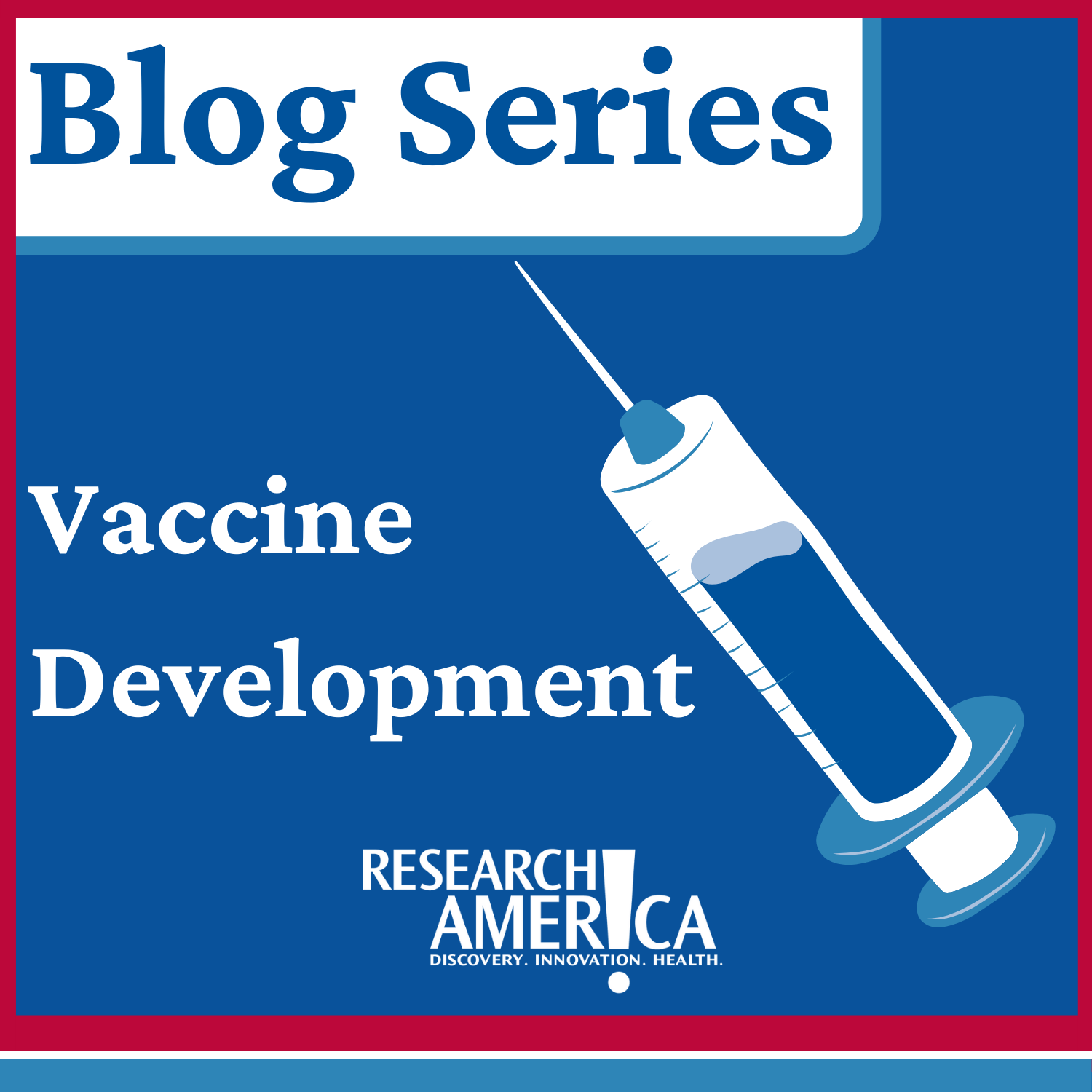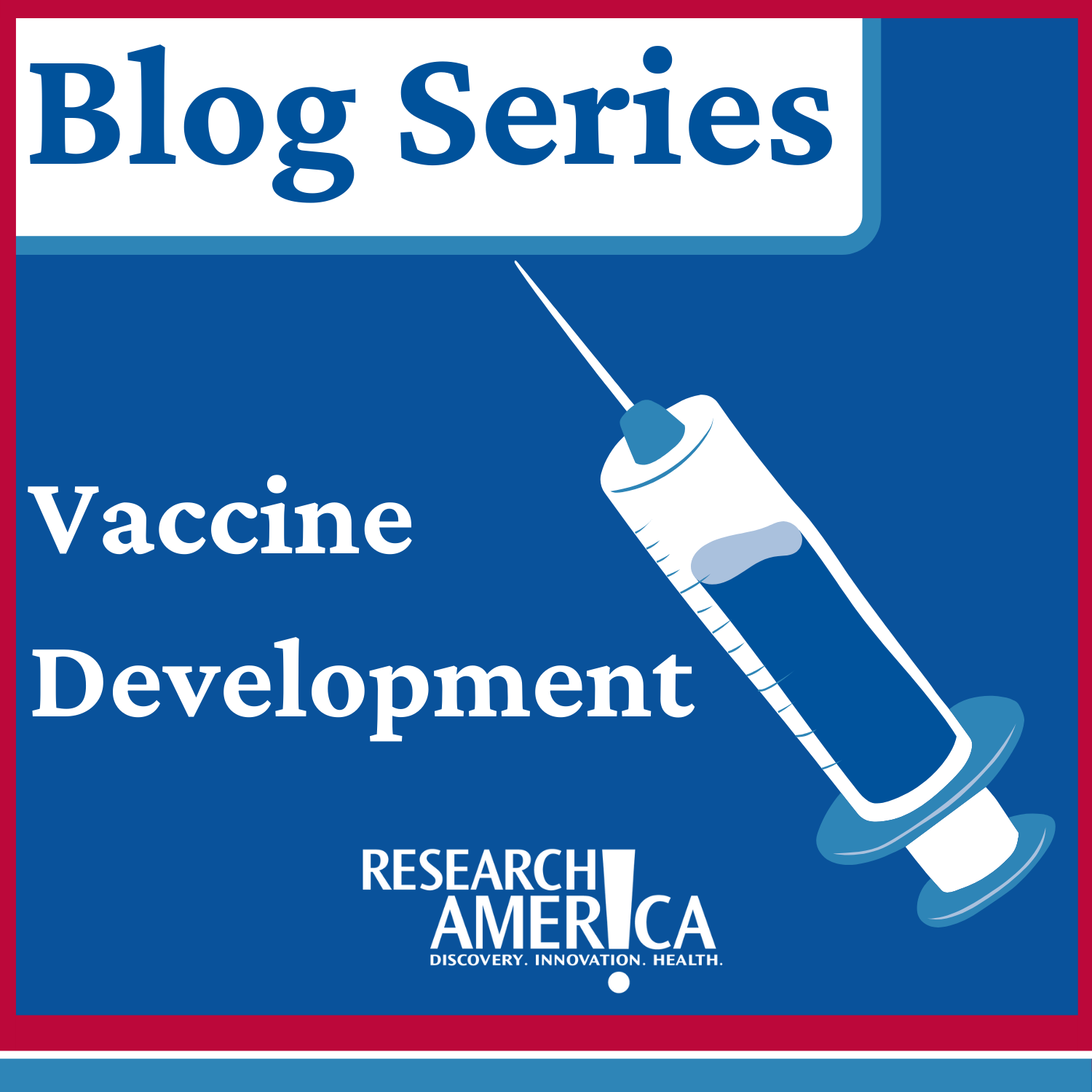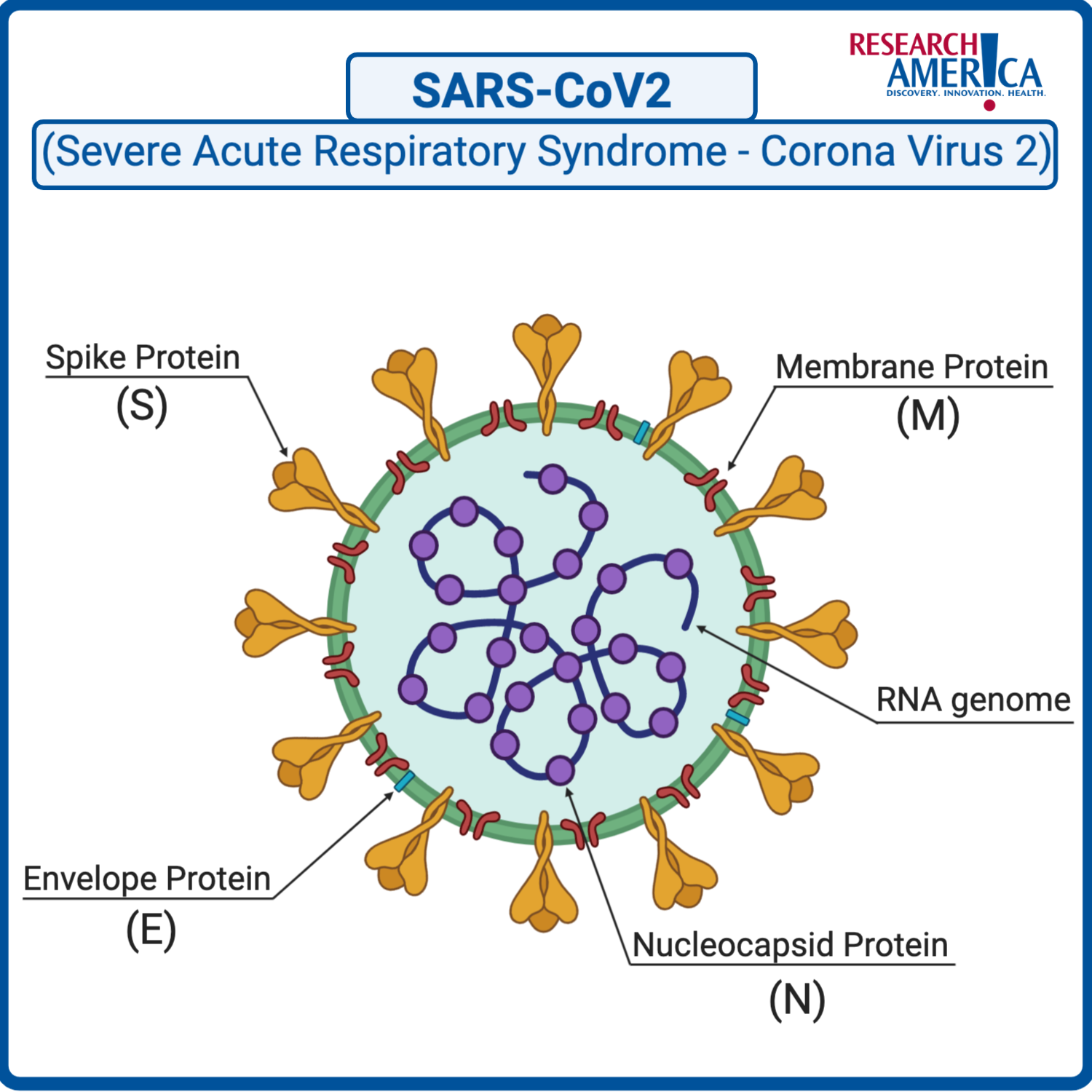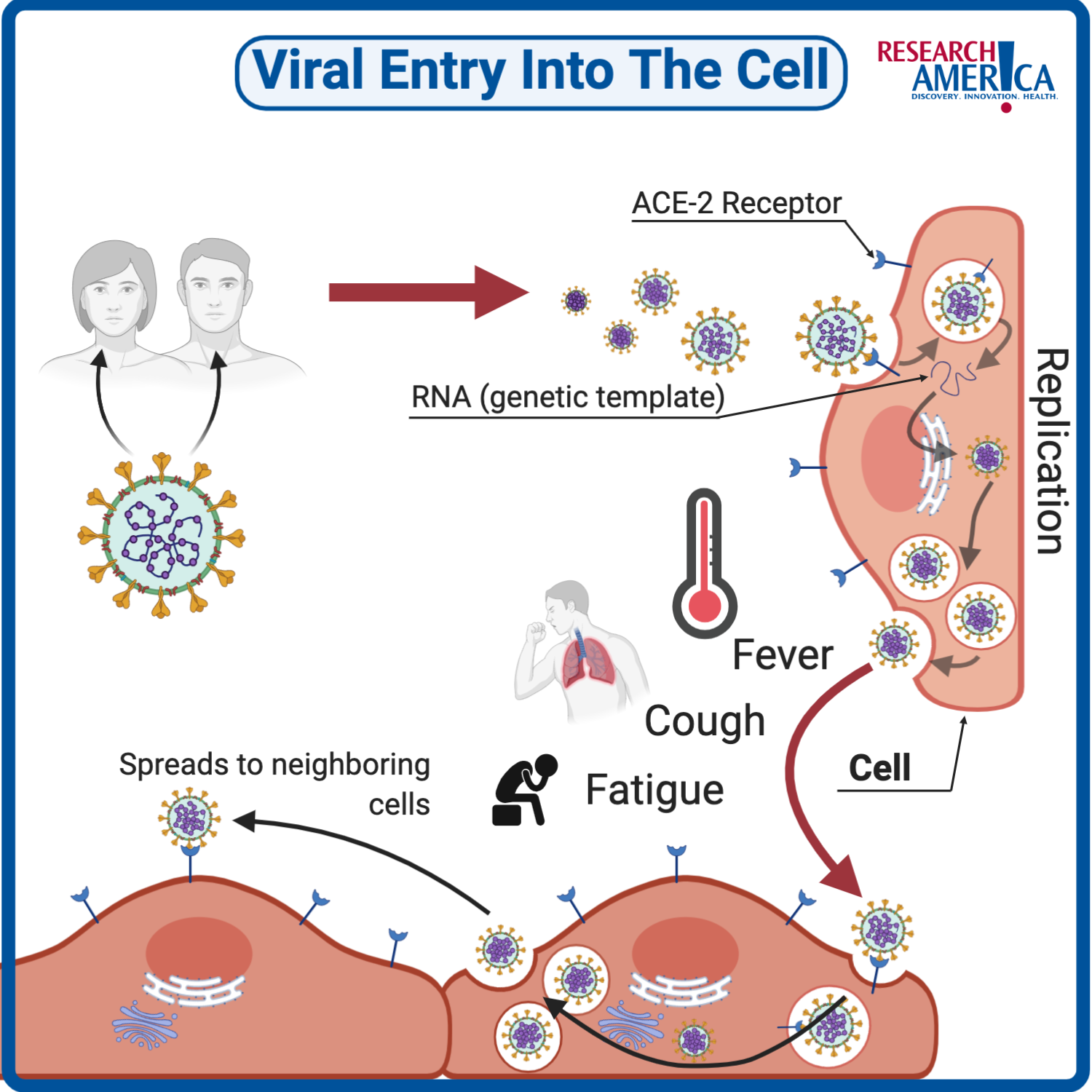What is a Virus and What is a Vaccine?

 What is a Virus?
What is a Virus?
Viruses are tiny parasites that can cause disease.1 While there are many types of viruses, they all contain genetic material, known as the viral genome, and a surrounding shell made of proteins and lipids.
The SARS-CoV2 virus, responsible for COVID-19, is about 125 nm wide, 1,000 times smaller than the width of a human hair.2 SARS-CoV2 is an RNA virus, meaning that the internal genetic material is single-stranded RNA. This RNA is packaged inside of the virus with the “N” protein while the “S”, “E”, and “M” proteins are components in the outer lipid shell. The “S” protein is the one that sticks out from the virus giving the appearance of a crown. The Latin word for crown is coronam, hence the name, coronavirus.2 For more information that explains coronaviruses, see this video on how they work.

In order for you to be infected with SARS-CoV2, the virus must enter your cells through a specific receptor known as ACE-2. ACE-2 is expressed in the lining of the lungs, mouth, and nose, as well as other places in the body.3 After the virus enters the cell, it takes over and converts the cell into a virus making factory, producing new virus particles that spread to other cells in your body. As this is happening, your body is alerted to the presence of the virus and begins to fight off the infection by activating the immune system. This activation causes the symptoms of COVID-19: shortness of breath, fever, soreness, etc.4 If your immune system is strong enough, you will begin to overcome the virus, eventually developing powerful, long-lasting IgG antibodies, the key to eliminating the virus and building immunity (see previous blog post | how antibodies are developed).
The goal of a COVID-19 vaccine is to skip over the infection, sickness, and recovery periods and jump straight to the end result, which is a primed immune system that knows how to fight off SARS-CoV2 with targeted antibodies.

What is a Vaccine?
Vaccines protect against disease by preparing your immune system to recognize a germ (virus or bacteria) as a threat before the disease can take hold in your body. The vaccine does this by showing the immune system what the germ looks like without making you sick. This is done by showing your immune system the whole germ or by showing a key exterior protein or sugar that is on the germ, known as a subunit. Once your immune system sees the germ or subunit presented by the vaccine, it will develop powerful IgG antibodies that specifically target those pieces. These antibodies serve as your defense force against infection. The information for how to create these specific antibodies is stored in the memory of key immune cells for future use. A successful COVID-19 vaccine will safely elicit IgG antibodies which specifically target the SARS-CoV2 virus and prevent any viral particles from entering and replicating in cells.
In addition to the subunit or whole germ, most vaccines contain the following components: adjuvants, which help boost your immune response to the vaccine, stabilizers, which help preserve the vaccine’s shelf life, and formaldehyde, which prevents the vaccine from being contaminated.5 Importantly, there is more formaldehyde naturally in your body than in the vaccine.5 Adjuvants are particularly important in vaccines which contain inactivated germ or only a piece of the germ.




